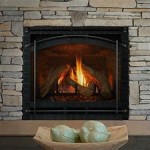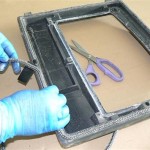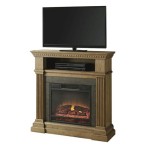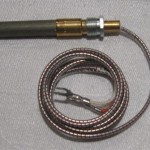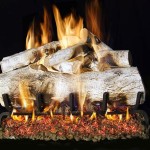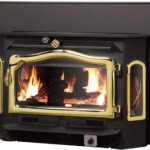```html
How To Redo a Fireplace Mantel
The fireplace mantel serves as a focal point within a living space, adding character and warmth to the room. Over time, a mantel can become outdated, damaged, or simply no longer align with the desired aesthetic. Redoing a fireplace mantel offers an opportunity to enhance the overall appearance of the fireplace and the surrounding area. This article outlines a comprehensive guide on how to redo a fireplace mantel, including essential steps, considerations, and techniques.
Assessing the Existing Mantel and Planning
Before embarking on any alterations, a thorough assessment of the existing mantel is crucial. This involves identifying the mantel's material, its condition, and its attachment method. Common materials include wood, stone, brick, and tile. Inspect for any signs of damage, such as cracks, chips, water stains, or insect infestations. The attachment method will determine the complexity of the removal process. Some mantels are secured with screws or nails, while others are adhered with mortar or adhesive.
Following the assessment, a clear plan outlining the desired outcome is essential. Consider the style, material, and dimensions of the new or refurbished mantel. Research various design options and gather inspiration from magazines, websites, or home improvement stores. Take accurate measurements of the fireplace and surrounding wall to ensure the new mantel will fit properly. It is also necessary to consider the fireplace's functionality. If the fireplace is frequently used, the new mantel material should be heat-resistant.
Furthermore, consider the overall style and décor of the room. Does the new mantel complement the existing furniture, paint colors, and architectural features? A cohesive design will create a harmonious and visually appealing space. If unsure, consult with an interior designer or home improvement professional for guidance.
Removing the Existing Mantel
The removal process will vary depending on the mantel's attachment method. Prior to commencing any demolition work, ensure adequate safety precautions are taken. Wear safety glasses, gloves, and a dust mask to protect from debris and potential hazards. Cover the surrounding area with drop cloths to prevent damage to flooring and furniture.
If the mantel is secured with screws or nails, carefully remove them using a screwdriver or nail puller. If the fasteners are concealed, look for recessed areas or decorative trim that may need to be removed first. For mantels adhered with mortar or adhesive, use a chisel and hammer to gently break the bond between the mantel and the wall. Start at the edges and work your way inward, being careful not to damage the surrounding wall or fireplace structure. If the mantel is particularly large or heavy, enlist the help of another person to avoid injury.
Once the mantel is detached, carefully remove any remaining mortar or adhesive residue from the wall. A putty knife or scraper can be used for this purpose. If necessary, use a specialized adhesive remover to soften stubborn residue. Ensure the surface is clean and smooth before proceeding to the next step.
Refurbishing or Installing the New Mantel
Whether refurbishing the existing mantel or installing a new one, proper preparation is key to achieving a professional-looking result. If refurbishing, thoroughly clean the mantel with a suitable cleaner to remove dirt, grime, and old finishes. Repair any damage, such as cracks or chips, using wood filler or epoxy. Sand the surface smooth to create a uniform texture.
For wooden mantels, consider applying a new stain or paint to update the color and finish. Choose a stain or paint that complements the room's décor and provides adequate protection against moisture and wear. Apply multiple coats, allowing each coat to dry completely before applying the next. For stone or brick mantels, cleaning and sealing may be sufficient to restore their appearance. Clean the surface with a specialized stone cleaner and apply a sealant to protect against stains and water damage.
When installing a new mantel, follow the manufacturer's instructions carefully. Ensure the mantel is level and securely attached to the wall. Use appropriate fasteners, such as screws, nails, or construction adhesive, depending on the mantel's material and weight. For heavier mantels, it may be necessary to install additional support brackets or anchors. Conceal any fasteners with wood filler or decorative caps for a seamless finish.
Consider adding decorative elements to enhance the mantel's appearance. These may include moldings, corbels, or decorative trim. Secure these elements with adhesive or nails, ensuring they are properly aligned and evenly spaced. Once the mantel is installed or refurbished, clean the surrounding area and remove any debris. Step back and admire the newly transformed fireplace mantel, a focal point that adds beauty and character to the home.
```5 Amazing Inexpensive Easy Fireplace Remodel Transformations Designed

Diy Fireplace Mantel Redo Cottage Home

Looking To Remodel Your Fireplace Tips You Need

Mantel Makeover With Paint

Fireplace Mantle Redo In Time For Diary Of A Quilter Quilt Blog

Diy Fireplace Makeover At Home With The Barkers

30 Fireplace Remodel Ideas For Any Budget

How To Update A Fireplace On Budget Home Matters Ahs

30 Fireplace Remodel Ideas For Any Budget

17 Fireplace Remodel Ideas Home Redo Facing
Related Posts

